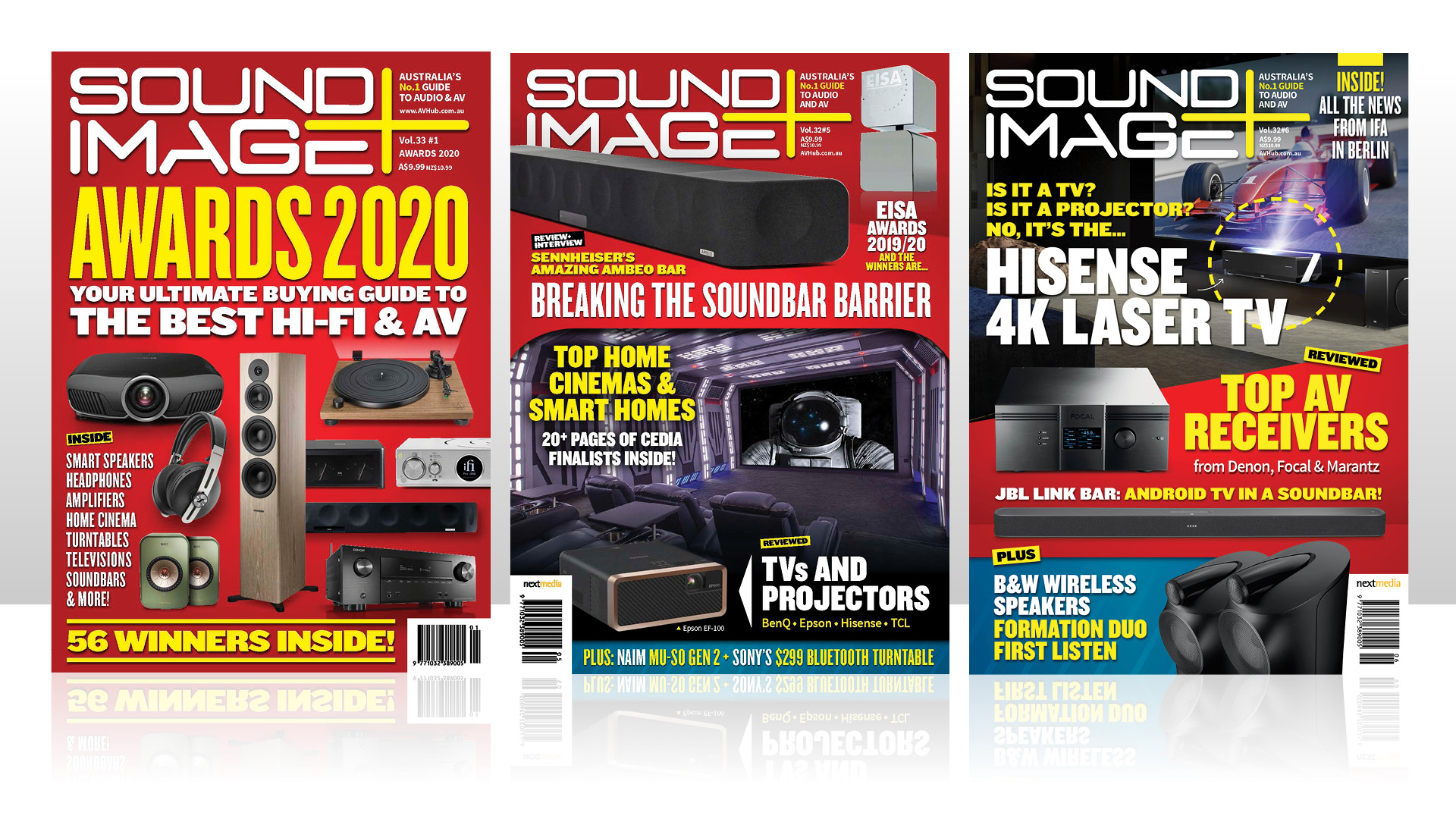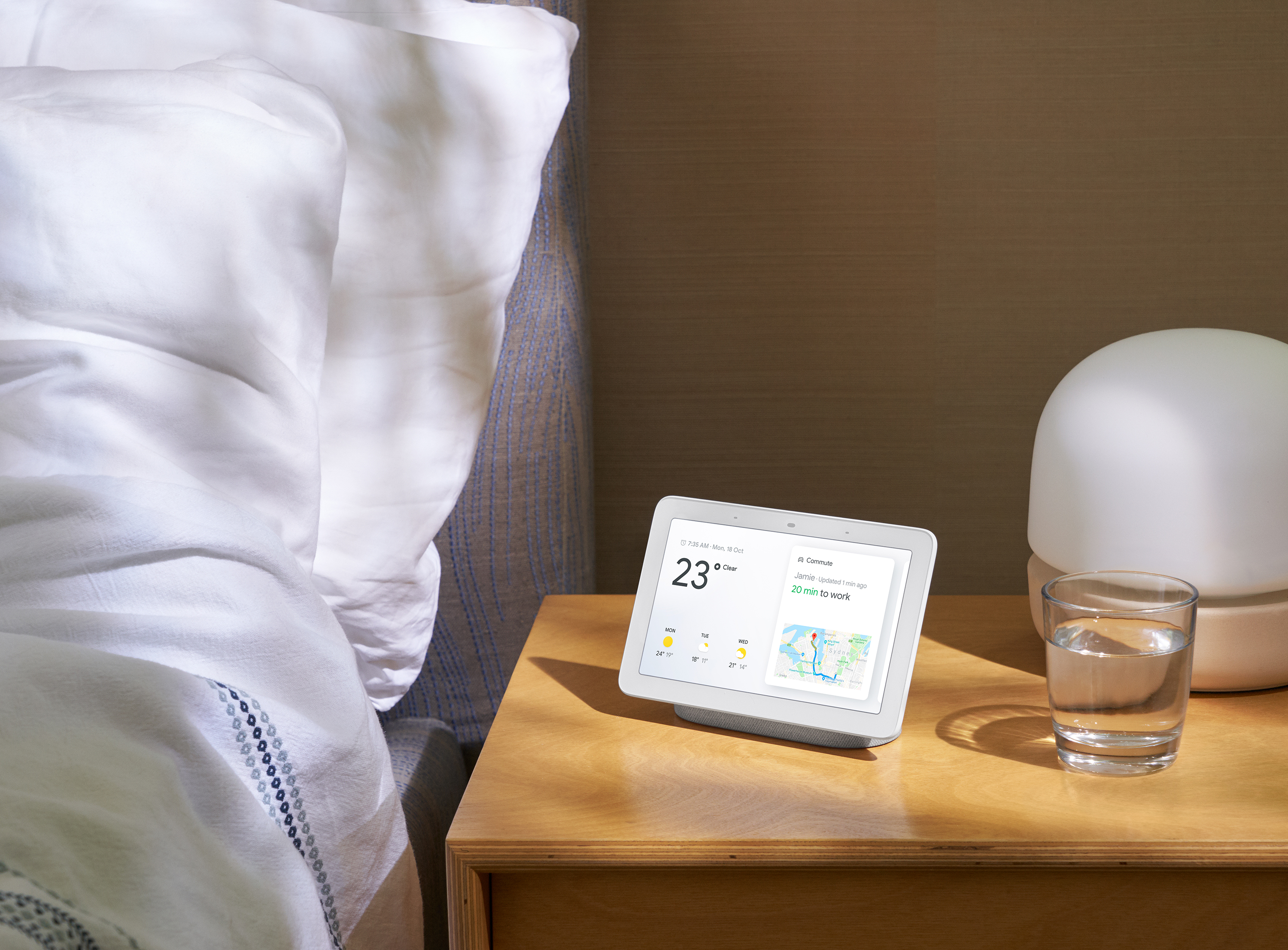Sound+Image Verdict
As a smart speaker with a screen, Google's Nest Hub works brilliantly in the kitchen, playing like a radio, helping you cut pineapple, and answering every enquiry. Well, except the ones it "doesn't know how to help with yet"...
Pros
- +
Screen enhances smart functionality
- +
Ambient-adaptive photo display
- +
Small footprint
Cons
- -
No camera
- -
Sound is small for music
- -
Best in the kitchen
Why you can trust What Hi-Fi?

This review originally appeared in Sound+Image magazine, one of What Hi-Fi?’s Australian sister publications. Click here for more information on Sound+Image, including details on how you can subscribe.
This is not the first smart speaker with a screen that the Sound+Image team has reviewed, and our view remains that there are obvious benefits from the visual information, but the screen also places limitations on their use.
Google’s Nest Hub (originally the Home Hub, but now rebranded) does however go some way to overcoming these issues. So while a display inevitably makes a smart screen far larger than a smart speaker, the Nest Hub proves remarkably dinky when you unbox it – 18cm wide and 12cm high, with a 7-inch diagonal screen. That’s far less dominant of a bedside table than, say, our award-winning JBL Link View smart screen, which adds speakers either side of an 8-inch screen, making it far larger at 33cm wide.
Secondly an always-on screen is visually distracting, especially in a lounge, or in a bedroom. To counter this, Google has included what is calls an ‘Ambient EQ Light Sensor’ which pulls a similar trick to the system in Samsung’s ‘The Frame’ TVs; it prevents an intrusive active illumination and, once you’ve set the easily adjusted brightness down a notch or two, presents a remarkably passive image – in many lights it can mimic a matte finish photograph. Indeed it is a better photo frame than any SD-card-loaded photo screen we’ve seen, although here you must have your photos stored in Google Photos.
Until this review we didn’t use this resource, but we now do, having discovered that while uploading full-size photos will eat into your allocated space in Google Drive, if you allow Google to apply its own compression algorithms, there is no limit on how many pictures you can upload, nor do they count against your Drive allowance. That’s quite the free cloud back-up! (Google already has all our mail, music and documents, so it may as well have our photos too.)

Given Google’s penchant for gathering information from all corners of our lives, it’s perhaps a surprise that the Nest Hub appears to be pandering to privacy concerns by not including a camera. It has twin mikes for hearing your voice commands, of course, and very effective at far-field listening they proved. But no camera, so that while you can make Google Duo calls using the Home Hub, they are audio only, not video chats. By contrast JBL’s Link View does have a camera, but allows you to slide a physical barrier across the lens so you can be darned sure it’s not watching you. Both approaches are interesting given that such privacy issues are normally downplayed by those who are placing always-listening (but not always-recording) devices in our homes.
Audio and video playback
It’s worth noting that one thing Google Nest Hub is not is a video player. The screen is a good screen, but a small screen. And while it does YouTube (which is quite the resource), you can’t send it anything else – you can’t ‘cast’ video to it, because it does not contain a video Chromecast.
But it is an audio Chromecast, along with Bluetooth, and Google Assistant. With a supported streaming service (Google Play, Spotify) linked in your Google Home app, you can verbally request any music, and out it flows. Link via Bluetooth and you can send any music source to the Home Hub, though audio quality here is clearly limited by its speaker, size not stated. It produces enough for general use, avoiding sharpness for the most part, but sounds small, mono and lacking in bass, with nothing below 80Hz and not much up to 120Hz, thinning even spoken word. It’s a radio-like sound, not a device for pumping tunes.
The latest hi-fi, home cinema and tech news, reviews, buying advice and deals, direct to your inbox.
Chromecast is also an effective multiroom system, so that you can a group the Home Hub with other Chromecast-enabled products and enjoy playback in multiple areas.
Plus of course the screen has many benefits when using Google Assistant in other ways. Ask about your daily commute and you get a map as well as an estimated travel time. Say ‘Hey Google, 10 minute timer’ and the screen counts down, so you no longer have to ask ‘Hey Google, how long on the timer?’ Kids can get pictures of animals as well as the sounds of animals. And of course with YouTube on tap you can ask “Hey Google show me how to cut up a pineapple.” We still find Google Assistant to be ahead of the rest in accuracy of comprehension and quality of response. One thing potentially ripe for development is adjusting the audio responses in the context of the screen; the Voice responses seem the same as from an audio-only Google speaker, when often the screen has already done much of the work.
For those installing Google-compatible smart devices like lights and plugs, the Home Hub is also an always-on control point, potentially easier than opening your phone or tablet. Swiping down takes you straight to the Home control screen.

The Google Home app
It operates, of course, within the Google Home app. While some users may never enter the app except to set it up, there are plenty of settings in there which can be useful.
One little known ability is to nominate a default playback speaker – any Chromecast speaker can link with another Bluetooth speaker so that you can say “Hey Google, play Crowded House” without specifying any other information, and the music should emerge from your defined default. Mind you when we tried this, linking a Google Home to first KEF’s LSX and then the Bluesound Pulse Mini, it didn’t always work, and when it did, the transmission quality was appalling, destroying the treble.
Other recent additions include the ability to turn on ‘Continued Conversation’, so that after the first ‘Hey Google’ question you can keep asking things without including ‘Hey Google’ with every request. Privacy advocates will, of course, ask how long it keeps listening! The answer from our attempts seems to be only about 10 seconds (during which every-thing is being piped off to Google’s storage servers for analysis).
Google Nest Hub also got a recent update presenting a dashboard of all your smart Google devices, and if grouped for playback together, also to control all their separate volumes from the screen (though you could do this from the Google Home app anyway).
For music, it’s also easy to set up multiple ‘Groups’ of your Chromecast-enabled speakers for multiroom playback. We made a group called ‘Party’, added our Google Home, Nest Hub and the Link 20 to it. Then when we opened Spotify, we selected ‘Party’ as our device (see right), and the tunes flowed from all three speakers at once, in perfect synchronisation.
Verdict
Everything about the Nest Hub – the screen, the YouTube, the photo display, the Home control, the limited sound – we reckon it all makes the Nest Hub a superb device for the kitchen. And perhaps only the kitchen. You really should not make it your default music device, because it simply isn’t good enough, though it does avoid being actually nasty or audibly offensive. In the kitchen it plays like a radio, helps you cut pineapple, allows you to broadcast messages to other Google devices around the home.
In that scenario, it proves so successful that the missus has announced she wants one there permanently. And that’s a first.
Sound+Image is Australia's no.1 mag for audio & AV – sister magazine to Australian Hi-Fi and to the UK's What Hi-Fi?, and bestower of the annual Sound+Image Awards, which since 1989 have recognised the year's best hi-fi and home cinema products and installations. While Sound+Image lives here online as part of our group, our true nature is best revealed in the print magazines and digital issues, which curate unique collections of content each issue under the Editorship of Jez Ford, in a celebration of the joys that real hi-fi and high-quality AV can bring. Enjoy essential reviews of the most exciting new gear, features on Australia's best home cinemas, advice on how to find your sound, and our full Buying Guide based on all our current and past award-winners, all wrapped up with the latest news and editorial ponderings. Click here for more information about Sound+Image, including links to buy individual digital editions and details on how best to subscribe.


